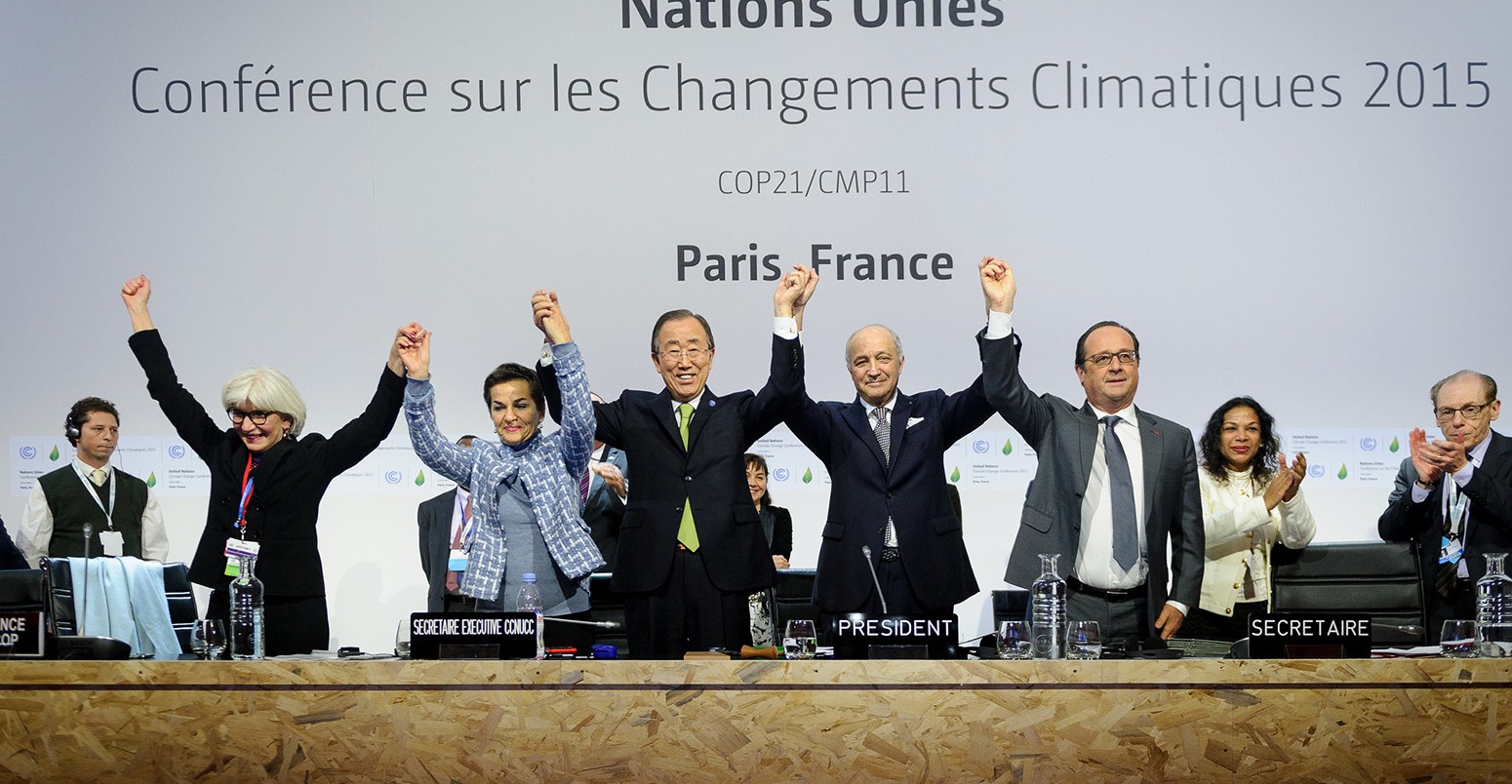The election of Donald Trump as President of the United States occurred just four days after the start of the 2016 UN Climate Conference in Marrakesh, Morocco. During the 2016 presidential election, Trump vowed to pull the United States out of the Paris Agreement with his firm belief that there is no proof of human-induced climate change [1]. The Paris Agreement, which entered into force on November 4, 2016, seeks to enhance the global response of combatting climate change and keeping global temperature rise below 2°C above pre-industrial levels [2]. Trump’s beliefs about climate change are a major cause of concern for the future of the United States in the Paris Agreement.
President Trump ultimately has the final decision on whether or not to remain the in Paris Agreement. An alternative to backing out of the agreement also exists, though neither option is in the best interest of the United States or Planet Earth. Paris Article 4.11 states:
“A Party may at any time adjust its existing nationally determined contribution with a view to enhancing its level of ambition, in accordance with guidance adopted by the Conference of the Parties serving as the meeting of the Parties to this Agreement.”[3]
Trump has the opportunity to formally revise the ambitions set forth by the Obama Administration and stay in the Paris Agreement. President Obama said the United States would reduce carbon emissions 26% from 2005 emissions by 2025 [4]. The Paris Agreement does not clearly state that ambitions must become more ambitious. So, although there is an opportunity for the United States to stay in the Paris Agreement under the Trump Administration, negatively revising the ambitions set forth by the U.S. would result in nearly as many harmful impacts as pulling out of the agreement. The negotiations of the Paris Agreement will continue this month in Bonn, Germany from May 8th-May 17th [5]. The hope is that the United States will remain in the Paris Agreement and continue making strides to combat climate change. President Trump is likely going to give his decision about whether or not the U.S. will remain in the Paris Agreement during this time.

This year at the mid-year negotiations in Bonn, only seven U.S. representatives are present at the conference as compared to 45 representatives in 2015[6]. The possibility of a decision from the U.S. exists this week. If not, Trump is expected to make a decision by the meeting of the G-7 leaders’ summit in Sicily later this month. The G-7 meets each year to discuss collective decision making regarding energy policy, security, and governance and is composed of seven industrialized democracies [7].
Withdrawing the United States from confronting climate change could result in many negative impacts. According to a recent poll, 66% of Americans are concerned that climate change will affect them personally[8][9]. Additionally, pulling out of the Paris Agreement would negatively affect job opportunities. According to the U.S. Department of Energy, approximately 800,000 Americans were employed in low-carbon-emission technology, as compared to 160,000 Americans employed by the coal industry [10]. Without the support of the United States in tackling climate change, there would be major concerns about the outcomes of global climate policy and the reliability of the United States, which is the world’s largest economy and second largest producer of greenhouse gases[11]. Furthermore, other countries may want to leave the Paris Agreement if the United States were to leave.
The entry into force of the Paris Agreement in 2016 was a huge achievement for global climate policy and environmental protection. As a world economic and policy leader, the United States plays a major role in setting an example for combatting climate change. Several possibilities exist in which Trump could move forward in combatting climate change. The best option for the health of the environment and the credibility of the United States is for Trump to decide to stay in the Paris Agreement with the ambitions set forth by the Obama Administration. On the other hand, Trump could decide to revise the ambitions currently in place and reduce U.S. efforts to combat climate change. This option is not ideal for climate governance, but it maintains some credibility. The worst option, for reasons discussed above, would be for Trump to pull out of the Paris Agreement. This would be detrimental for the health of the environment and for the reliability of the U.S. as an ally in the fight against global climate change.
Though no formal decision has been made yet, it is likely only a matter of days or weeks before the Trump Administration will release a decision regarding the Paris Agreement. Until then, we can only hope that the health of Planet Earth is kept in mind.

[1] http://www.bbc.com/news/election-us-2016-36401174
[2] http://unfccc.int/paris_agreement/items/9485.php
[3]https://unfccc.int/files/meetings/paris_nov_2015/application/pdf/paris_agreement_english_.pdf
[4] https://www.nytimes.com/2017/03/02/us/politics/climate-change-trump.html?_r=0)
[5] http://unfccc.int/meetings/bonn_may_2017/meeting/10076.php
[6] https://www.eenews.net/stories/1060054180
[7] http://www.cfr.org/international-organizations-and-alliances/group-seven-g7/p32957
[8] https://poll.qu.edu/national/release-detail?ReleaseID=2449
[9] http://www.wri.org/sites/default/files/Clean_Energy_Fact_Sheet_final.pdf
[10]https://energy.gov/sites/prod/files/2017/01/f34/2017%20US%20Energy%20and%20Jobs%20Report_0.pdf)
[11] https://www.nytimes.com/2017/03/02/us/politics/climate-change-trump.html?_r=0
Photo 1: http://www.climatenetwork.org/event/bonn-intersessional-may-2017
Photo 2: https://www.carbonbrief.org/analysis-the-final-paris-climate-deal